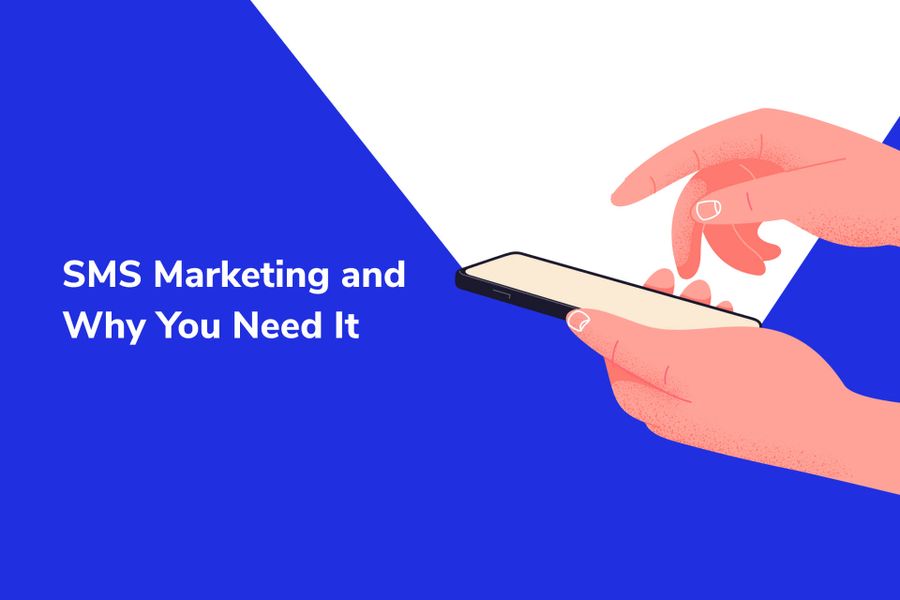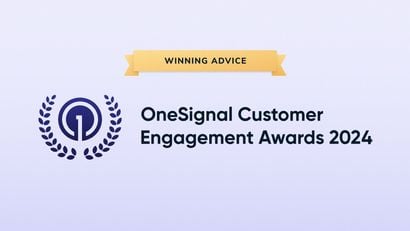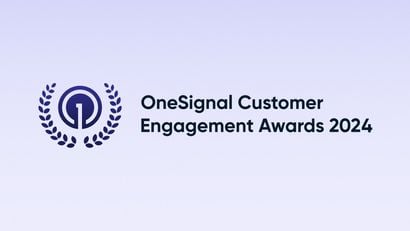SMS marketing, or text message marketing, is the new big craze! At this point, consumers not only accept, but expect to see both transactional messages and marketing messages in this intimate, everyday channel. Your customers are now used to seeing all types of messages from brands —from two-factor authentications to appointment confirmations to price drop alerts to real-time updates— front and center in their message inboxes.
SMS marketing can elevate your digital marketing strategy and can provide a range of unique benefits that differentiate it from other marketing channels you may already be using, such as push notifications, email, and in-app messaging. Let’s get into exactly why and how you can use text message marketing to drive conversions and boost revenue.
In the US, over 6 billion text messages are sent and received every day. In 2020, almost 50 million Americans opted to receive SMS marketing messages. In the ever-evolving digital ecosystem, text message marketing is emerging as a critical mobile-first communication tactic.
A Quick Definition
If you didn’t already know, SMS stands for Short Message Service. SMS marketing, or text message marketing, is in widespread use by brands across many different verticals today. One advantage of SMS marking is that it’s a personal, highly engaging medium of reaching consumers. With text message marketing, brands can reach their subscribers with messages 160 characters or less in length in this real-time channel.
If you think it will add value, you can also enhance your text message marketing strategy with MMS, or Multimedia Messaging Service, which involves sending messages with visual elements, such as videos, pictures, audio, GIFs, and animations. MMS can make your messages more compelling and increase engagement.
The Benefits of SMS Marketing
So what makes SMS a unique way of communicating with your customers? Why do you need it if you’re already using other digital marketing channels? Here are some of the key advantages text marketing can provide for your business.
Direct Communication
With SMS marketing, your users receive messages without needing to proactively visit your website or download your app. These alerts arrive on a user’s native text app, which is about as up-close-and-personal as it gets.
High Open Rates
SMS campaigns have much higher open rates than email campaigns, for instance. Text messages have a 97 percent read rate within 15 minutes of receipt, whereas email open rates average only around 20 percent. Your subscribers are extremely engaged with their native text apps, which gives you the opportunity to make a greater impact with your marketing efforts in this channel.
High Priority
Many of us have an intimate relationship with our phones. Checking our texts is often the first thing we do in the morning and the last thing we do at night. The data shows that consumers are more likely to open a text message before any other form of communication they receive.
Reach
SMS gives you a broad global reach. Worldwide, over one billion people still use a phone that’s not an iPhone. Text message marketing lets you reach consumers across the globe regardless of whether they have a smartphone or an internet connection.
ROI
SMS marketing campaigns offer a high ROI. One study shows that 45 percent of text message campaigns generate high returns. Another shows that 75 percent of consumers prefer offers through SMS, and 57 percent said they’d be willing tp participate in an SMS loyalty program.
How Does It Work?
Similar to email marketing, text message marketing involves first building a list of recipients who’ve agreed to receive your brand communications. You then message your subscribers with relevant content from logistical messages— such as confirmations, appointment reminders, and order delivery updates— to promotional messages—such as sales, promotions, and personalized product recommendations.. Within your digital marketing strategy, you may plan to message your customer base with mass text messages, or choose to segment more strategically.
The type, style, and frequency of the SMS campaigns you send will depend on your industry and the use cases you serve. Because SMS is such a personal and engaging channel, make sure not to over message users with SMS campaigns. Doing so could lead your customers to become irritated and unsubscribe from your list.
Best Practices and Rules
1.Earn the Opt-In: Before launching your SMS marketing campaigns, you first need your recipients to opt in to receive text messages from your brand. SMS is a permission-based channel, which means need to earn users’ express written consent to send them marketing messages. You must adhere to SMS compliance standards, set forth by regulations such as the TCPA, or Telephone Consumer Protection Act.
2. Understand Transactional and Marketing Use Cases: SMS is well-suited for both transactional and marketing messages. However, best practices differ slightly for each broad set of use cases. Let’s get into the basic differences.
Transactional Messages are informational or logistical in nature and are often designed to convey time-sensitive information. Given this channel’s high visibility and engagement rates, SMS is an excellent channel for conveying information you want customers to immediately act on. (A channel like email, by contrast, is a better choice for lower priority, asynchronous messages.) Transactional SMS can be triggered by actions like an app user's overdrawing their bank account, booking a telehealth appointment, or receiving a package.
Transactional SMS Examples:
- Account Alerts- Send urgent account alerts such as overdraft notifications, fraud alerts, and balance updates.
- Emergency Alerts- Send all types of intensity-based weather warnings, including messages that communicate the severity of a weather event such as a tornado, flood, or storm.
- Logistical messages- Keep customers informed along their journey by sending order confirmations, shipping updates, and delivery notifications.
Marketing messages, unlike transactional messages, seek to drive the recipient to take a certain action, like clicking on a price drop notification and purchasing the product in question in your online store. As discussed, marketing messages are subject to more stringent regulatory requirements and are most effective when sent to segmented customer groups.
Marketing SMS Examples:
- Sales and Promotions- With text message marketing, you can send these time-sensitive promos to create a sense of urgency and drive conversions for your product or service as well as bridge the brick and mortar experience .
- Product Recommendations- Leverage your user data to segmented SMS campaigns advertising personalized products recommendations, such as a certain style and size shoe in your online store.
- Events- Use text messaging both to promote events and coordinate logistics along the way. Confirm registration and set calendar placeholders, deliver access codes or passwords, send addresses or map links, and provide reminders.
- Coupons- Coupons are well-suited to SMS and can be sent in text form via SMS or via MMS if they include graphics or other media elements. In our experience, customers redeem texted coupons 10 times more often than other coupons
3. Manage Frequency: After you get your subscribers’ consent to receive your SMS marketing messages, you’ll need to optimize your message volume and frequency. You’ll want to send SMS on a lower frequency than email and push. Best practices will depend on your industry, but generally you’ll want to send one or two promotional messages per week to avoid over-messaging users in this sensitive channel.
4. Segment Your Customer Base: In addition to managing your SMS marketing messages’ volume and frequency, you’ll want to segment your recipients in order to send them the most relevant content for their use case and lifecycle stage. Use cross-channel information to better target your text campaigns using data like app or website activity, user preferences, and location.
5. Create a Connected Customer Experience: SMS is a powerful bridge between the online and offline elements of your customer experience. It’s a channel that can drive value for your brand, especially when used in conjunction with the other marketing channels at your disposal. SMS is useful in that it can connect with customers who don’t have your app downloaded and/or don’t have push notifications enabled or who don’t have a smartphone at all. Think about reaching segments of your customer base who will benefit most from SMS communications, like subscribers in certain regions.
Send SMS that Works
OneSignal is the market-leading self-serve customer engagement solution for push notifications, email, SMS & in-app messages. We’re loved by marketers and developers alike!
Create relevant, personalized texts easily through the OneSignal dashboard. Add emojis, images, audio, and video to make your messages visually compelling, all with no code. Or, automate personalized messages at scale with the API. Create your free OneSignal account to start sending SMS, push notifications, in-app messages, and email — all from one intuitive dashboard.
Create a Free Account



